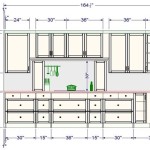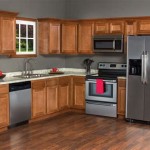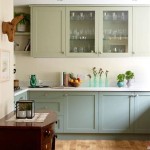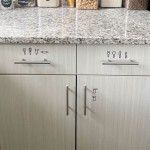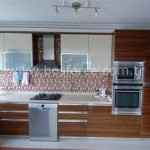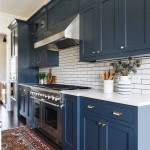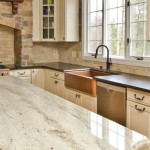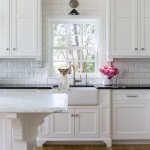MDF vs Plywood for Kitchen Cabinets: Which Material is Right for You?
When designing your dream kitchen, the choice of material for your cabinets is a crucial decision. Two popular contenders, Medium-Density Fiberboard (MDF) and plywood, each boast advantages and disadvantages. This article delves deeper into the key distinctions between these materials to help you make an informed choice for your kitchen cabinetry.
MDF: A Versatile and Affordable Option
Medium-Density Fiberboard (MDF) is an engineered wood product made by breaking down wood fibers into fine particles, blending them with resin, and compressing them under heat and pressure. The resulting material is dense, smooth, and highly versatile. It's known for its affordability, consistent quality, and ability to be formed into intricate shapes. These qualities make MDF a popular choice for cabinet construction, particularly for contemporary and modern kitchens.
Advantages of MDF for Kitchen Cabinets:
- Affordability: MDF generally costs less than plywood, making it a budget-friendly option for kitchen cabinets.
- Smooth Surface: The dense and uniform nature of MDF results in a smooth, consistent surface that readily accepts paint and finishes, making it ideal for achieving sleek and modern looks.
- Versatility: MDF possesses the ability to be molded and shaped into intricate designs, making it well-suited for creating custom cabinets with elaborate details.
- Dimensional Stability: MDF is less prone to warping, shrinking, or expanding compared to solid wood, ensuring consistent dimensions over time.
Disadvantages of MDF for Kitchen Cabinets:
- Moisture Sensitivity: MDF is susceptible to moisture damage. It can swell and warp when exposed to excessive humidity or water, making it less suitable for environments with high moisture levels.
- Weak Edges: The edges of MDF panels can easily chip or crack, necessitating careful handling and installation. Applying edge banding provides additional protection.
- Limited Durability: While MDF is sturdy, it can be less durable than plywood, particularly when subjected to heavy loads or impact.
Plywood: A Strong and Durable Choice
Plywood is another versatile material that's widely used for kitchen cabinets. It consists of layers of thin wood veneer with alternating grain directions, bonded together with adhesive. The cross-graining structure provides exceptional strength and stability. Plywood is often chosen for its durability and resistance to warping, making it a reliable choice for long-lasting cabinets.
Advantages of Plywood for Kitchen Cabinets:
- Strength and Durability: The layered construction of plywood makes it highly resistant to warping, splitting, and sagging, ensuring long-lasting cabinet performance.
- Moisture Resistance: Plywood is generally more moisture-resistant than MDF, making it a suitable option for kitchens with high humidity levels or areas near sinks and appliances. However, it's essential to choose plywood with a moisture-resistant finish, such as marine-grade plywood, for optimal protection.
- Versatile Finishes: Plywood can be readily stained, painted, and finished to match various kitchen styles and aesthetic preferences.
Disadvantages of Plywood for Kitchen Cabinets:
- Cost: Plywood generally costs more than MDF, making it a less budget-friendly option.
- Weight: Plywood can be heavier than MDF, which may require more robust hardware and construction techniques for cabinet assembly.
- Less Smooth Surface: The veneer layers in plywood can create a less smooth surface compared to MDF, requiring additional sanding and finishing to achieve a flawless look.
Factors to Consider When Choosing Between MDF and Plywood:
The choice between MDF and plywood for your kitchen cabinets depends on several factors:
Budget Considerations:
MDF is typically more affordable than plywood, making it a suitable choice for budget-conscious homeowners. If you're working with limited budget constraints, MDF can help you stay within your financial goals while achieving a stylish kitchen.
Style and Design:
The style and design of your kitchen play a significant role in the material selection. If you're aiming for a contemporary or modern aesthetic with smooth surfaces, MDF often provides a more seamless and sleek look. Plywood's natural grain patterns are well-suited to traditional and rustic styles, adding a rustic touch to your kitchen decor.
Moisture Levels:
The moisture levels in your kitchen are crucial considerations, especially if you have a high-humidity environment. Plywood, particularly moisture-resistant varieties, provides better protection against moisture damage and warping. If your kitchen is exposed to water splashes or steam, plywood is the more suitable option.
Durability and Load Capacity:
The durability and load capacity of your cabinets also influence material selection. Plywood's superior strength and stability make it ideal for areas that require heavy-duty cabinets, such as pantry shelves or cabinets holding heavy cookware.
By carefully weighing the pros and cons of MDF and plywood, you can choose the material that best meets your budget, style preferences, and functional requirements for your kitchen cabinets.

Mdf Vs Plywood Cabinets Which Is Best For Your Remodel

Mdf Vs Plywood Choosing The Right Wood For Your Project Bob Vila

Mdf Vs Plywood Choose The Perfect Fit For Your Needs

Mdf Vs Plywood Make The Right Choice

Kitchen Cabinet Construction Particle Board Mdf Or Plywood Toulmin Bath Custom Cabinets Kitchens And Bathroom Design Remodeling In Tuscaloosa Birmingham Alabama

Medium Density Fibreboard Mdf Or Plywood

Why Mdf Has Become So Popular For Cabinet Doors Blog 180 Kitchens

Plywood Vs Melamine Mdf Choice Cabinet

Mdf Vs Plywood Which Is Better

Plywood Vs Melamine Mdf Choice Cabinet
Related Posts

